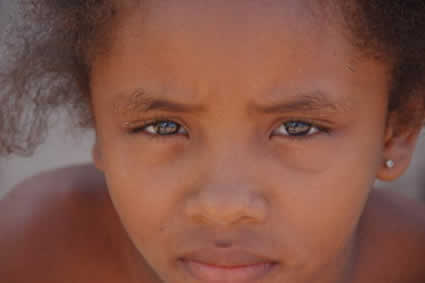As a new school year begins across the nation, students will once again take up their books to learn about the shameful history of the slave trade around the world.

The problem is that the slave trade is far from history. In fact, it is very much the shame of our world today.
Currently, more slaves exist than during the time of slave trade abolitionist William Wilberforce. But unlike in Wilberforce’s day, 80 percent of today’s slaves are women and girls; 50 percent are children.
Earlier this summer, the U.S. State Department came out with its Trafficking in Persons Report for 2011. The report created global concern as nations reacted to their “tier placements.” Most third world countries fell under “Tier 2,” a dubious designation reserved for nations whose governments don’t “fully comply with the Trafficking Victims Protection Act’s (TVPA’s) minimum standards, but are making significant efforts to bring themselves into compliance with those standards.”
The report is no surprise to those of us who work to rid the world of extreme poverty. For instance, in the 25 developing nations where Compassion International serves, 19 were placed in the “Tier 2” category. An additional five nations where Compassion serves were on the “Tier 2 Watch List,” a group of “countries whose governments do not fully comply with the TVPA’s minimum standards, but are making significant efforts to bring themselves into compliance with those standards,” according to the report. Only one of the 25 countries found itself in “Tier 1”—meaning it was fully compliant with the TVPA’s minimum standards.







3 Comments |Add a comment
A good thing for all of us to do is simply to talk with family and friends about slavery. We hear about it in the Compassion circles but it’s my observation that most people in the developed world don’t know it exists today. Awareness is the first step towards change. The second should be prayer.
It was through the sponsorship of one of our 13 Compassion children that we began to realize that slavery is worse now than it’s ever been, especially child slavery. Although our Compassion child in Ghana was the one God used to lead us to this discovery when he told us we’d serve in his country, our love for God’s command to protect these children compelled us into action — it’s not enough to read the stories and be sad for these children, we need to be the hands and feet of Christ.
Alone, we can’t do much, but when have we ever been alone when we’re with Christ?
Slavery may seem impossible to stop, but since when has anything been impossible for God?
Join us this November as we travel to Ghana to meet 4 of our Compassion children and serve the Lord in their country in an effort to put an end to the horrors of child slavery. Join us in person, or join us from where you are — as God’s precious children, they belong to us all. They’re not our problem, they’re our opportunity to love Him through loving them.
It’s interesting that you mention the World Cup and the Olympics attracting traffickers — the same thing happens in the U.S. every year during the Super Bowl. Here’s a clip from an article written by Aaron Russell of the Dallas City Buzz Examiner:
“It’s a sad fact that where men and money converge, human trafficking follows. The Super Bowl is the pinnacle American sporting event, and a surge in prostitution will happen in this year’s host city of Dallas. To meet the demand, many prostitutes will be brought in, including children and teens. Many of these will be forced victims — sex slaves for human traffickers.”
Some sad facts on trafficking:
* It is estimated that 1.2 million children are trafficked each year — they are taken for prostitution, pornography, debt bondage and other illicit activities.
* Human trafficking is the fastest growing criminal industry in the world.
As to how poverty plays into this issue:
“Trafficking in children often involves exploitation of the parents’ extreme poverty. Parents may sell children to traffickers in order to pay off debts or gain income, or they may be deceived concerning the prospects of training and a better life for their children. They may sell their children for labor, sex trafficking, or illegal adoptions.
Victims of human trafficking are not permitted to leave upon arrival at their destination. They are held against their will through acts of coercion and forced to work or provide services to the trafficker or others.”
How traffickers coerce children to obey:
• Sedatives injected into them
• Sexual abuse
• Starvation
• Threats and fear
• Physical abuse
• House arrest
• Forced use of drugs and alcohol
• Verbal abuse